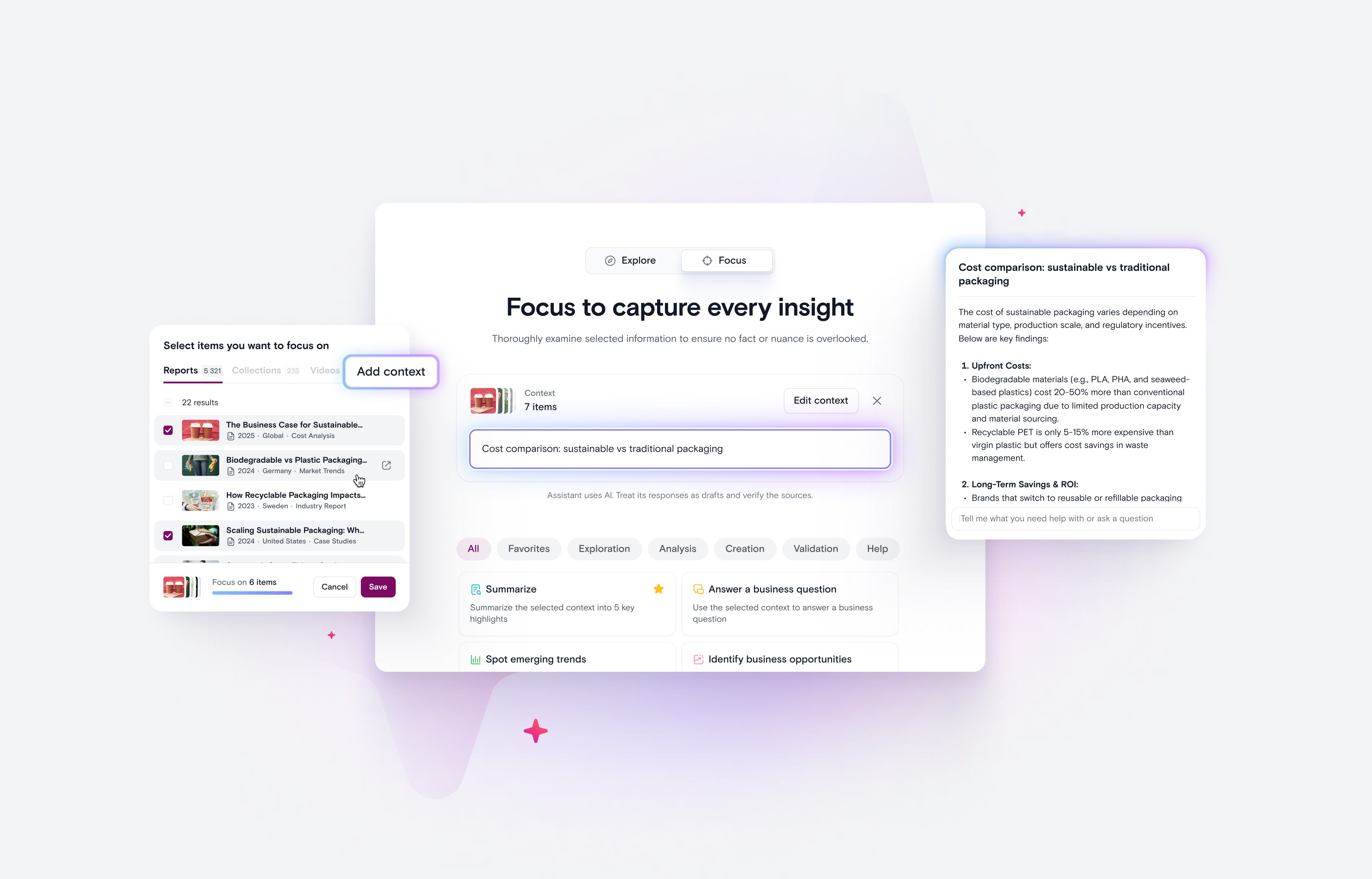The Benefits of a Single Platform for all of your Customer Insights

Every “customer-centric” or “customer-obsessed” organization out there is on the hunt for customer insights, and there are a host of methods to obtain them. It’s helpful to think about these methods in terms of quantitative and qualitative approaches. Quantitative research - the better known of the two - is used to obtain numbers and percentages which, when held up to a reference point, measure the success of products and services. Qualitative research, on the other hand, answers the “why” and “how” behind this success (or lack thereof). Impactful customer research involves both of these approaches.
Enterprise organizations employ a plethora of tools to gather, analyze and interpret quantitative and qualitative customer research - and there are various departments that participate in both kinds of research: Marketing, Customer Experience, User Experience, Service & Support, and Sales, as well as programs like Voice of the Customer.
However, there usually isn’t much cross-pollination between these units. They're generally siloed entities, and this is a huge organizational oversight. These teams will likely be asking the same questions and doing the same research, independent of one another. They will all use different tools to store, organize and share their findings.
Lessons Learned from UX Research Repositories
Practitioners of User Experience Research (UXR) recognized the need for a place to store and organize qualitative research findings, and the term “repository” was used to describe this function. A variety of tools were created to facilitate this, and most were built around the practice of UX research.
While these tools worked well for UX researchers, they weren’t as accessible to the stakeholders of that research (e.g., product managers, designers, and engineers). After all, the ultimate goal was to increase the impact of UX research by making it more visible, accessible and shareable.
The lesson learned here is that platforms for the collection, storage and sharing of customer insights should be created for a wide user base. Not just researchers themselves, but stakeholders across the company. The platform should allow for the sharing of insights with these stakeholders, and the interface must be user-friendly. Because if stakeholders don’t use the platform, its value is difficult to justify.
A Single Source of Truth
You may have heard the phrase, “Single Source of Truth”. While the original definition comes from information science and has more to do with data normalization, it has come to mean “Let’s put all of our data in one place”.
For customer insights, this means that everything should be aggregated in one central location, so that it’s easily accessible. The advantages to this approach include:
- No more siloed data
- Elimination of duplicate research
- Increase in productivity (since people spend much less time looking for information in multiple locations)
- Increased use of research in product development
This approach doesn’t come without challenges. Firstly, buy-in and adoption are crucial - for both leadership and employees. If the platform isn’t used, its value is very low. Additionally, information and data must be curated, and presented in such a way that folks across the organization can understand its context and impact.
How to Set Up a Single Platform for Success
1. Assemble a roll-out team.
The team will be responsible for communications and training, as well as road-mapping and ownership of the project - so it’s important that the team be robust enough to handle these responsibilities. One tip for this work: create a network of “advocates” for the project. These folks should come from various teams and be willing to be “the first to know” about project communications and updates. They can also facilitate troubleshooting if anyone on their team has questions or needs assistance.
2. Implement a roll-out strategy that gets people excited about knowledge sharing.
Make sure everyone is aware of the platform before it’s implemented. This sounds simple, but in an enterprise setting, it can be tricky! The best case scenario is to assemble a cross-functional rollout team, so that communication is more organic - and also leads to increased trust in a new way of doing things. In addition, the implementation work is spread among multiple people, instead of resting with a single person or team.
3. Make insights easy to find.
Nothing is worse than a sub-par search functionality. It’s essential to implement an “intelligent” search across vast amounts of information. The results of this kind of search are highly accurate, and tailored to the person who is searching.
4. Choose a tool with an excellent user interface (UI).
This goes without saying! If this tool is for everyone at an organization, the UI should be highly accessible. An excellent UI also minimizes the need for extensive training.
Compiling all customer insights in one platform is the way forward for organizations delivering customer-centered products and services. The ability to synthesize qualitative and quantitative research findings side-by-side is key to deeply understanding customer needs and behavior, which ultimately results in a product or service that people love to use.
Related Content

The Role of AI in Decision-Making: Smarter Insights or Faster Mistakes?
Thor Olof Philogène Apr 3, 2025

To Maximize the Value of Your Research, Start with Knowledge Management
Sarah Wiggins Mar 27, 2025

Stravito Enhances GenAI Assistant to Accelerate Time-to-Insight
Charlotte Hilton Mar 20, 2025